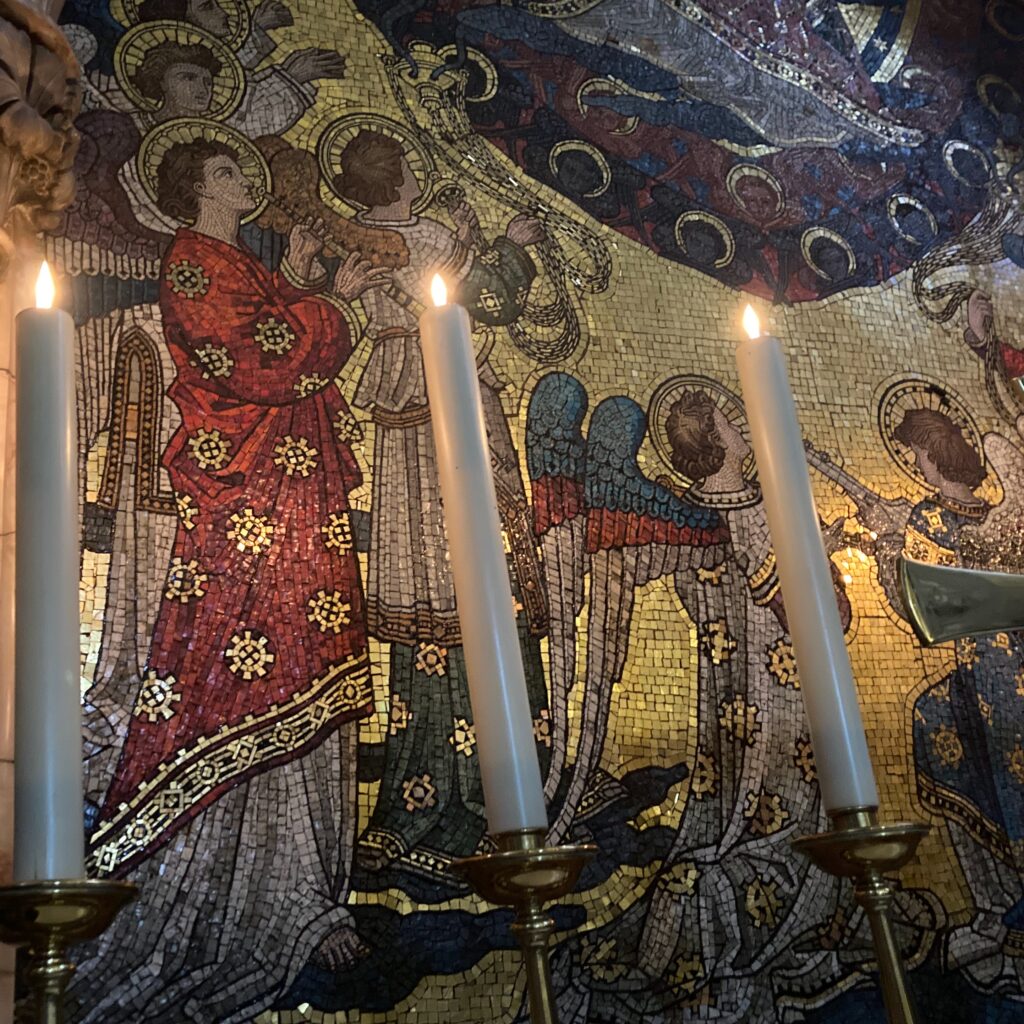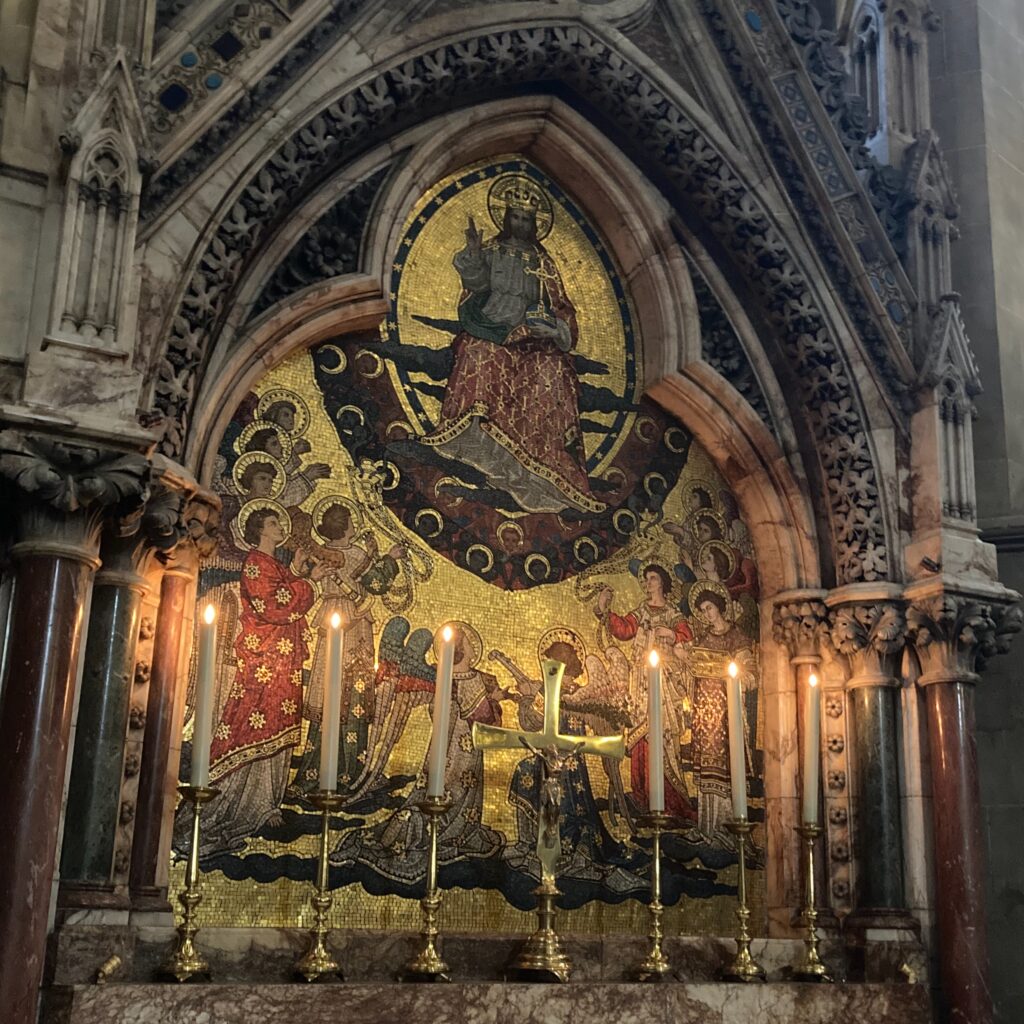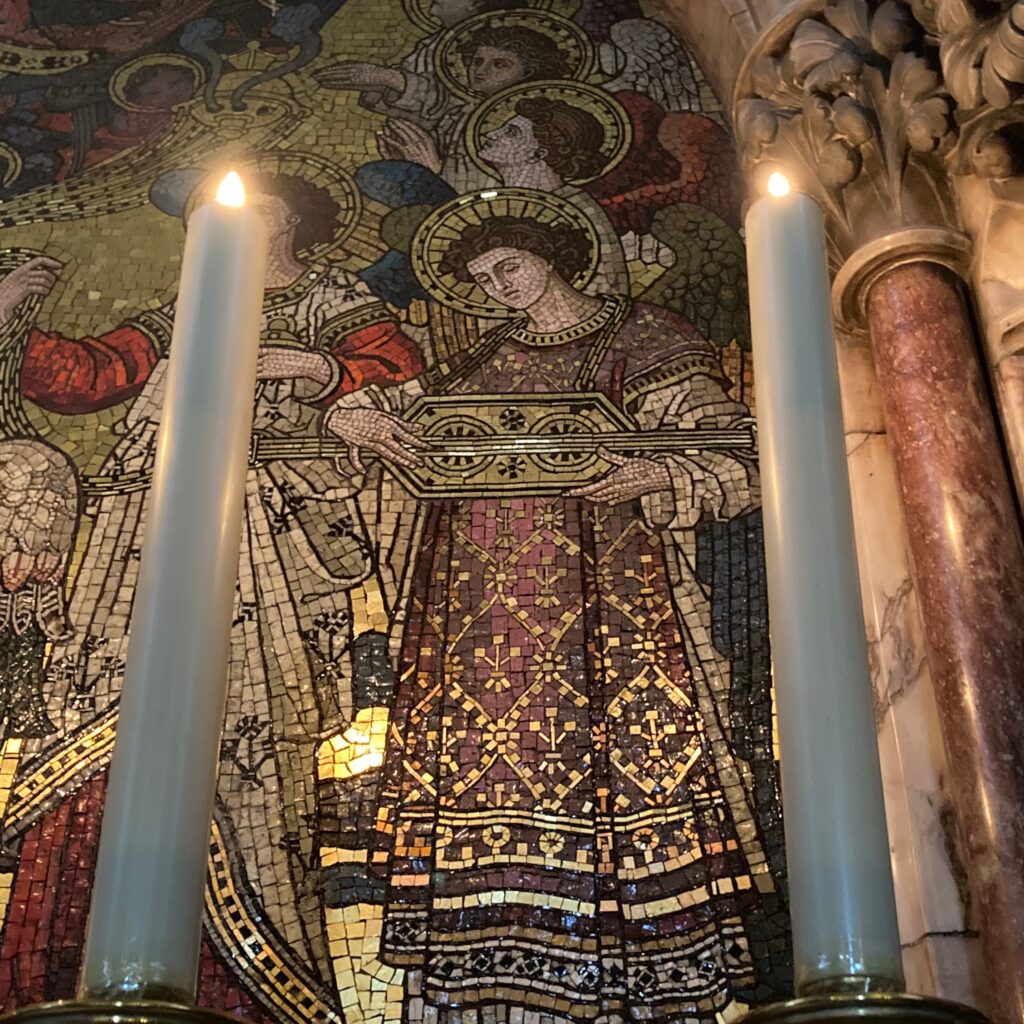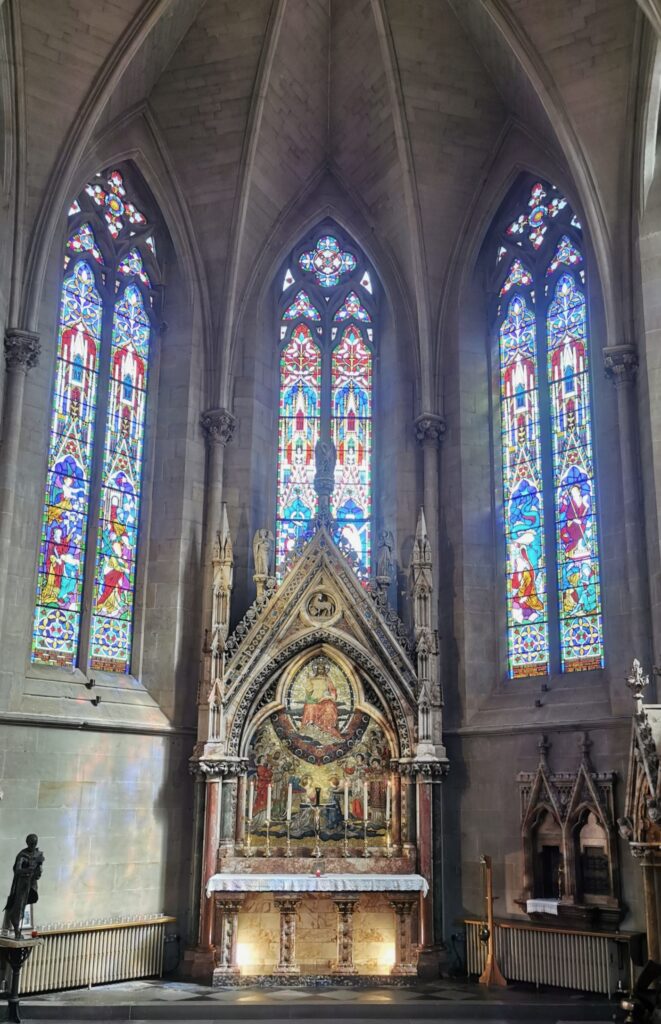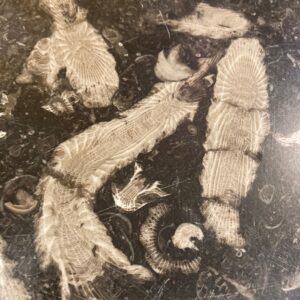High Altar and Reredos
Looking from the west end of the cathedral, just inside the main doors, the focal point for the viewer is the elevated High Altar and Reredos which dominate the east end of the chancel. This feature reflects the vision of Bishop Forbes of a church in which, ‘worship, not preaching, should be its primary purpose; the altar, not the pulpit must be the point on which the gaze of the worshippers should be fixed’.
The Reredos (canopy over the altar) dates from 1867, constructed in alabaster and marble by Clayton and Bell, to a design of Sir George Gilbert Scott. The detailed mosaic work, added in 1875, was made in the famous glass workshop of Antonio Salviati, on the island of Murano in Venice. The subject is Christ in Glory, seated and crowned, with the orb of the world in one hand, and the other raised in benediction. Our Lord is surrounded by cherubim and seraphim, and angel figures, two with censers and others with musical instruments, in attitudes of worship.
The plinth is inlaid with malachite and the whole is surmounted with rising marble pillars, terminating with the ancient Christian symbol of self-sacrifice, the pelican feeding her young with the blood from her own breast. In 1875, the Dundee Advertiser singled out the ‘chastely designed Reredos’ as one of St Paul’s finest features, a ‘work of rare excellence’. The entire cost was borne by Bishop Forbes.
The High Altar is later, presented in 1884 in memory of Bishop Forbes (d.1875), by Sister Frances Elizabeth (Frances Bolland), Mother Superior of the Sisterhood of St Mary and St Modwenna. The altar consists of a huge slab of black marble from the Frosterley quarries in Weardale, Co. Durham. It is eight feet long, nearly a foot thick and beautifully speckled with the fossils of sea creatures from over 300 million years ago. In the medieval period, Frosterley marble was transported to Durham Cathedral, where you can see it in the floor and pillars of the Chapel of the Nine Altars.
